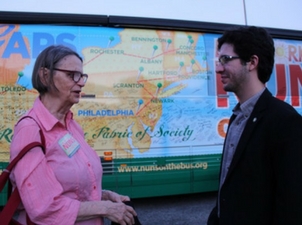
Family Reunification is the Heart of Immigration
Sister Bernadine Karge, OP
February 22, 2018
May I share the immigration story of the Gomez* Family whom I met more than 13 years ago?
Mr. Gomez* had come to the United States in the early 1980’s to work to support his wife, and children in Mexico. When the Immigration Reform and Control Act of 1986 (IRCA) went into effect in 1987, Mr. Gomez applied for temporary resident status during the one year application time. He successfully proved that he had entered the U.S. without documents, lived here without documents since 1/1/82, had provided for himself, paid taxes and was a person of good moral character. After the required time as a temporary resident, he became a permanent resident in 1992. One aspect of the 1986 law was that there were no derivative beneficiaries. This means a spouse could not bring in his or her spouse and minor unmarried children into the country as permanent residents when she or he recieved a “green card.”
However, as a permanent resident Mr. Gomez could and did file a petition to bring his wife and unmarried children in 1992. So Mr. Gomez was living legally in the U.S. and his wife and three kids were living in Mexico. What would you do? Leave your wife and kids in another country or bring them here? The latter, no doubt, which is what the Gomez family did-reunite the family. The children attended school here in the U.S. and the sons began working with their dad in the factory when they were old enough.
When I first met the family, in 2005, their number in the second preference visa category was not current. They patiently waited in line for a visa number to become available. Two years later in July 2007, their number became available, but the older son was over 21. Would he be able to immigrate with his mother as a derivative along with his younger brother and sister? Each family member, mom and three kids had to file a separate petition, get a medical examination, do fingerprints and a background check. This cost the family about $5000 in application, medical and biometrics fees before fees increased at the end of July 2007!
In November 2007, the family went for an interview at the immigration office in Chicago. Thanks to the Child Status Protection Act and its intricate formula for protecting “child status” the immigration officer agreed with us that the older son was under 21 for immigration purposes. Mr. Gomez’s wife and the three children were granted permanent resident status at the end of 2007 – 20 years after dad first applied!
The daughter graduated from grade school and high school. She became a U.S. citizen when she turned 18 and graduated from college last June. The sons have married, immigrated their wives and are raising their children in Chicago. Family is the chain that binds us. Family reunification is the foundation of U.S. immigration law.
*Name has been changed to protect the privacy of the family







